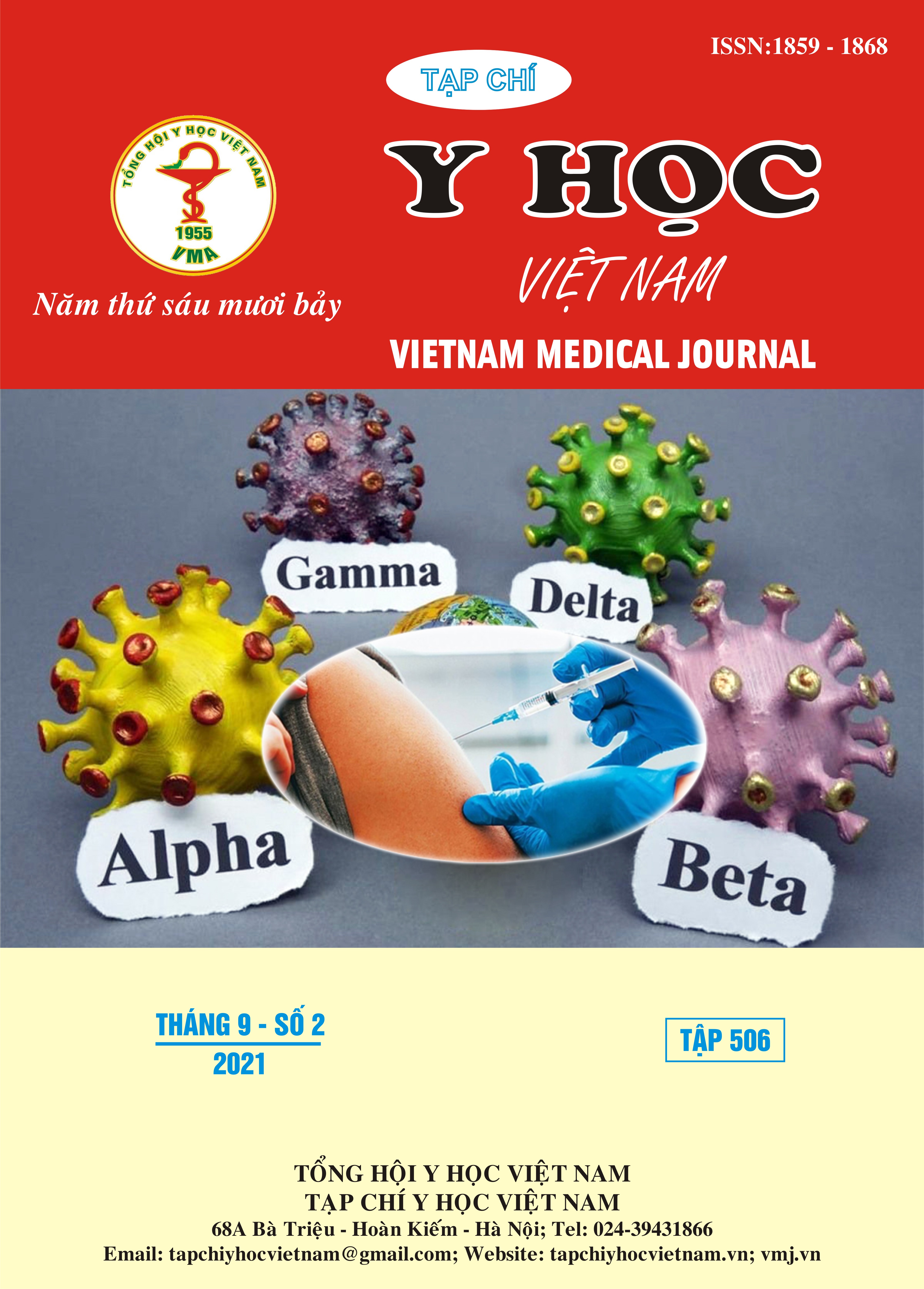SIDE EFFECTS OF SUBDERMAL CONTRACEPTIVE IMPLANON NXT®
Main Article Content
Abstract
Implanon NXT® is a high-effective, long-acting duration of action, quickly reversible after removal contraception. However, there are some side effects. Objective: to determine the side effects of Implanon NXT® for 3-years-used contraception. Method: A follow-up descriptive study of 310 clients who inserted Implanon NXT® for contraception from June 2017 to May 2018, followed to May 2021 at Center for reproductive health and Family planning – National Hospital for Obstetrics and Gynaecology. Side effects and removals were recorded. Result: Menstrual side effect: Amenorrhoea and spotted bleeding, menorrhagia and frequent bleeding, normal menstruation were reported by 39.0%, 26.1% and 14.8% clients respectively in the first 6 months, and changed to 20.9%, 23.8% and 24.8% clients after 3 years. Non-menstrual side effects comprised weight gain (50%), vaginal dryness and loss of libido (30%), mood swings (13.8%), acne (11.9%), breast tenderness (8.2%). The rate of Implanon NXT® removal was 29%. The main reason is mentrual disorder, 44.4%. Conclusion: the rate of menstrual disorders decreased gradually over time. The highest of non-menstrual side effect rate was weight gain. The Implanon NXT® discontinuation rate due to menstrual disorders accounted for the most.
Article Details
Keywords
Implant contraception, Implanon NXT®, side effect
References
2. Luis Bahamondes VBea. A 3-year multi centre randomized controlled trial of etonogestrel- and levonorgestrel-releasing contraceptive implants, with non-randomized matched copper-intrauterine device controls. Human Reproduction. 2015;30(11):2527-2538.
3. Lorenzo Arribas-Mir, Dolores Rueda-Lozanoa, María Agrela-Cardona et al. Insertion and 3-year follow-up experience of 372 etonogestrel subdermal contraceptive implants by family physicians in Granada, Spain. Contraception. 2009 Nov;80(5):457-62
4. Anna Maria Teunissen, Bernd Grimm and Frans J.M.E. Roumen. Continuation rates of the subdermal contraceptive Implanon and associated influencing factors. The European Journal of Contraception and Reproductive Health Care, 2014; 19: 15–21
5. Trần Thị Phương Mai. Nghiên cứu hiệu quả tránh thai độ an toàn và sự chấp nhận sử dụng thuốc cấy tránh thai Implanon ở phụ nữ Việt Nam. Tạp chí Y học thực hành. 2004;2(472):70-72.
6. Đào Văn Thụ. Bước đầu đánh giá tác dụng không mong muốn của thuốc cấy tránh thai Implanon tại bệnh viện Phụ sản Trung Ương. Luận văn chuyên khoa II Trường Đại học Y Hà Nội; 2018.
7. Đoàn Thị Ái. Nghiên cứu khả năng chấp nhận - Hiệu quả và tác dụng phụ của thuốc cấy tránh thai Implanon tại tỉnh Thừa Thiên - Huế. Tạp chí Y học thực hành. 2008;596-602.
8. Olayinka R Balogun, Abiodun S Adeniran and Adebayo A Adewole. Haematological and biochemical effects of etonogestrel subdermal implant (Implanon) in Ilorin Nigeria. International Journal of Health Science, Qassim University. 2016 Oct; 10(4): 499–506.
9. Perez, M. J., Squires, K. J., Parks, L., & Peipert, J. F. Perceived weight gain among adolescents using contraception. Journal of Pediatric and Adolescent Gynecology. 2015 Apr 28(2), e70.


